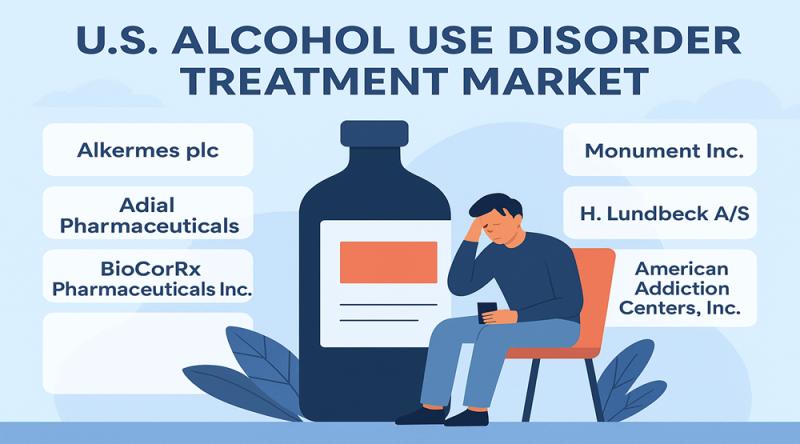Retired BG doctor continues to educate about stroke, heart attack risk factors – BG Independent News

Report on Research Aimed at Eliminating Atherothrombotic Disease
Introduction: Advancing SDG 3 Through Cardiovascular Research
A recent presentation by Dr. William Feeman Jr. at the 2025 European Atherosclerosis Society Congress detailed a research initiative with the potential to significantly advance United Nations Sustainable Development Goal 3 (SDG 3), which focuses on ensuring healthy lives and promoting well-being for all at all ages. The research, titled “The (Virtual) Elimination of Atherothrombotic Disease (ATD),” introduces a novel risk prediction tool designed to prevent heart attacks and strokes, directly addressing SDG Target 3.4 to reduce premature mortality from non-communicable diseases (NCDs).
Research Methodology and Scope
The Bowling Green Study
The foundation of the predictive model is the Bowling Green Study, a comprehensive analysis based on nearly 50 years of evidence. Key parameters of the study include:
- Duration: Data collected from November 1, 1974, to January 1, 2023.
- Participant Pool: 907 patients of all ages and genders.
- Focus: Tracking the risk factor profiles of patients who developed clinical cardiovascular disease.
Interdependent Risk Factor Analysis
Dr. Feeman’s approach diverges from current risk prediction models by treating risk factors as interdependent, a methodology aligned with the Framingham Heart Study recommendations. The primary risk factors examined are:
- Hypertension
- The lipid ratio of low-density lipoprotein (LDL) to high-density lipoprotein (HDL) cholesterol
- Cigarette smoking
This integrated analysis is designed to better capture the interplay between different risk factors, addressing the limitation of current models that often assess them individually.
Contribution to Sustainable Development Goal 3: Good Health and Well-being
Targeting Non-Communicable Diseases (SDG Target 3.4)
Atherothrombotic disease is the most common cause of morbidity and mortality in the Western world, making it a primary target for NCD reduction efforts under SDG 3. Dr. Feeman’s work contributes directly by:
- Providing a tool for medical professionals to identify at-risk patients early.
- Enabling preventative treatment to avert the onset of clinical ATD, including heart attacks and strokes.
- Offering a pathway to virtually eliminate a major category of NCDs, thereby reducing premature mortality.
Improving Long-Term Health Prediction
A significant challenge in achieving SDG 3 is the effective long-term management of health risks. Current prediction models are often limited to forecasting cardiovascular events within a seven-to-ten-year window. Dr. Feeman’s research, based on real-world patient experiences over decades, offers a more accurate long-term forecast. This enhanced predictive capability is vital for lifelong health planning and sustained well-being.
Highlighting Preventative Health Measures
The research underscores the critical role of lifestyle choices in disease prevention, a cornerstone of SDG 3. The findings emphasize that cigarette smoking is a profound risk factor, capable of causing cardiovascular problems even in individuals with excellent cholesterol levels. A key takeaway is that quitting smoking can delay the onset of heart attacks and strokes by as much as 10 years, demonstrating a powerful and accessible preventative health action.
Conclusion and Future Dissemination
Dr. Feeman’s predictive tool concludes that the lower the calculated average age of ATD onset for an individual, the higher their near-term risk of a cardiovascular event. By focusing on the interplay of major risk factors and their long-term impact, this research provides a practical, real-world application for clinical practice that prioritizes prevention over reaction.
The research abstract is slated for publication in the online journal Atherosclerosis, and a summary will be presented at the National Lipid Association in 2026. This work represents a tangible contribution to the global effort to combat NCDs and achieve the targets set forth in SDG 3.
Relevant Sustainable Development Goals (SDGs)
SDG 3: Good Health and Well-being
- The article’s central theme is the prevention of atherothrombotic disease (ATD), which includes heart attacks and strokes. This directly aligns with SDG 3, which aims to ensure healthy lives and promote well-being for all at all ages. The research presented by Dr. Feeman focuses on reducing morbidity and mortality from non-communicable diseases (NCDs), a core component of this goal. The article states that ATD is “the most common cause of morbidity and mortality in the western world,” highlighting the significance of this health issue.
Specific SDG Targets
Target 3.4: By 2030, reduce by one-third premature mortality from non-communicable diseases through prevention and treatment and promote mental health and well-being.
- Dr. Feeman’s research is explicitly aimed at prevention. His work provides a “risk prediction tool” to “help medical professionals identify at-risk patients and treat them to prevent the onset of ‘clinical ATD,’ including heart attacks and strokes.” This preventative approach is the cornerstone of Target 3.4.
Target 3.a: Strengthen the implementation of the World Health Organization Framework Convention on Tobacco Control in all countries, as appropriate.
- The article identifies “cigarette smoking” as one of the primary risk factors for ATD. Dr. Feeman’s research underscores the severe impact of smoking, noting that even with “wonderful cholesterol levels,” smoking can cause problems. The article provides evidence of the benefits of tobacco control by stating that “Quitting smoking can play a critical role in reducing cardiovascular risk, delaying the onset of heart attacks and strokes by up to 10 years.” This directly supports the objectives of Target 3.a.
Indicators for Measuring Progress
- Mortality and Morbidity Rate from Cardiovascular Disease: The article’s opening states that “atherothrombotic disease is the most common cause of morbidity and mortality in the western world.” The success of preventative measures like Dr. Feeman’s tool would be measured by a reduction in these rates.
- Prevalence of Key Risk Factors: The article explicitly names the indicators Dr. Feeman uses to assess risk: “hypertension, a lipid ratio of low-density lipoprotein (LDL) cholesterol and high-density (HDL) cholesterol, and cigarette smoking.” Monitoring the prevalence of these risk factors in a population is a direct way to measure progress towards preventing NCDs.
- Prevalence of Tobacco Use: “Cigarette smoking” is highlighted as a critical, independent risk factor. The article’s emphasis on patients who lived long lives “attributed to never having smoked” implies that the prevalence of smoking is a key indicator of population health and cardiovascular risk.
- Average Age of Onset of ATD: Dr. Feeman’s predictive tool “leads to providing average age of onset” of the disease. The article concludes that “the lower the average age of ATD onset, the higher the near-term risk.” Therefore, an increase in the average age of onset would serve as a direct indicator of successful prevention and delayed disease progression.
SDGs, Targets, and Indicators Analysis
| SDGs | Targets | Indicators |
|---|---|---|
| SDG 3: Good Health and Well-being | Target 3.4: Reduce premature mortality from non-communicable diseases through prevention and treatment. |
|
| SDG 3: Good Health and Well-being | Target 3.a: Strengthen the implementation of the WHO Framework Convention on Tobacco Control. |
|
Source: bgindependentmedia.org

What is Your Reaction?
 Like
0
Like
0
 Dislike
0
Dislike
0
 Love
0
Love
0
 Funny
0
Funny
0
 Angry
0
Angry
0
 Sad
0
Sad
0
 Wow
0
Wow
0
















































































